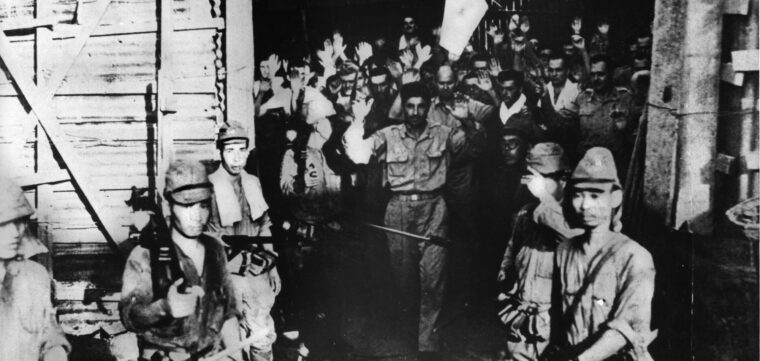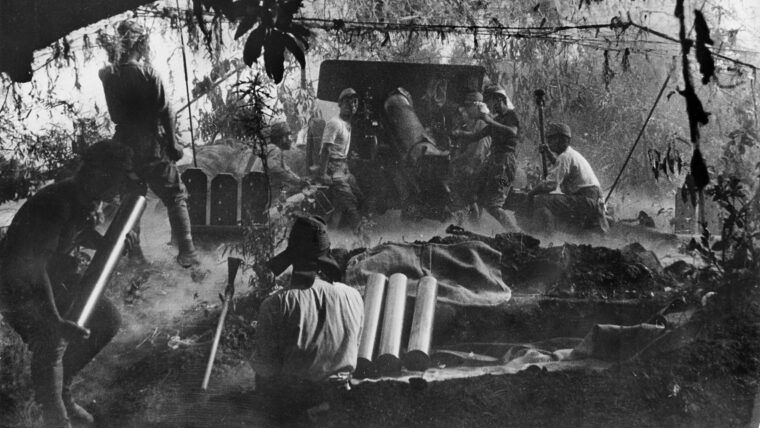
Bataan Death March
POW: Art and the Image of The Prisoner
By Peter HarringtonWar produces casualties … and captives. Much “war art” concerns itself with the heroics and clash of battle, the sway of forces, and the turns of history. Read more

Bataan Death March
War produces casualties … and captives. Much “war art” concerns itself with the heroics and clash of battle, the sway of forces, and the turns of history. Read more

Bataan Death March
Soochow was a mongrel dog with a remarkable gift for self-preservation. A homeless stray, he attached himself to some U.S. Read more

Bataan Death March
On January 30, 1945, a group of U.S. Army Rangers, Alamo Scouts, and Filipino guerrillas set out on a daring nighttime raid on Cabanatuan POW camp in the Philippines. Read more

Bataan Death March
On August 6, 1942, the men of Maj. Gen. Alexander Vandegrift’s U.S. 1st Marine Division watched from the railings as their troopship, the USS George F. Read more

Bataan Death March
“Finally at Corregidor there was only a little crowd of American soldiers and Filipino soldiers and American nurses at the beaches, with nothing at their backs but the waters of the Pacific, and the flag came down. Read more

Bataan Death March
The very nature of war means that some participants will be killed and others will be wounded, and some estimate the deaths in WWII to be around 85 million. Read more

Bataan Death March
In 1941, the Philippine Islands, 7,000 in number, an American-controlled mandate, formed a natural barrier between Japan and the rich resources of East and Southeast Asia. Read more

Bataan Death March
Lieutenant Colonel William Edwin Dyess, a U.S. Army Air Corps pilot and squadron commander, was considered a hero by men who served under him in the Philippines and who felt they owed their own lives to Ed’s sacrifice. Read more

Bataan Death March
Since 1931, Japan’s army had asserted control over territory on the continent of Asia, brushing aside Chinese resistance, condemnation and political pressure from other nations, and most recently, the Allied military. Read more

Bataan Death March
The Great Depression greatly affected millions of Americans during the 1930s, and my father, Chad Hanna, was no exception. Read more

Bataan Death March
Following their impressive string of victories in Malaya, Hong Kong, Burma, the Dutch East Indies, and the Philippines, it appeared that the Japanese were invincible in the early days of World War II. Read more

Bataan Death March
When the Tokyo War Crimes Trials opened in the former hilltop headquarters of the Japanese military at Ichigaya on May 3, 1946, American-born chief prosecutor Joseph Keenan faced a difficult task. Read more

Bataan Death March
Staff Sergeant William Nolan dared not raise his hopes this August day in 1945, but something unusual was unfolding. Read more